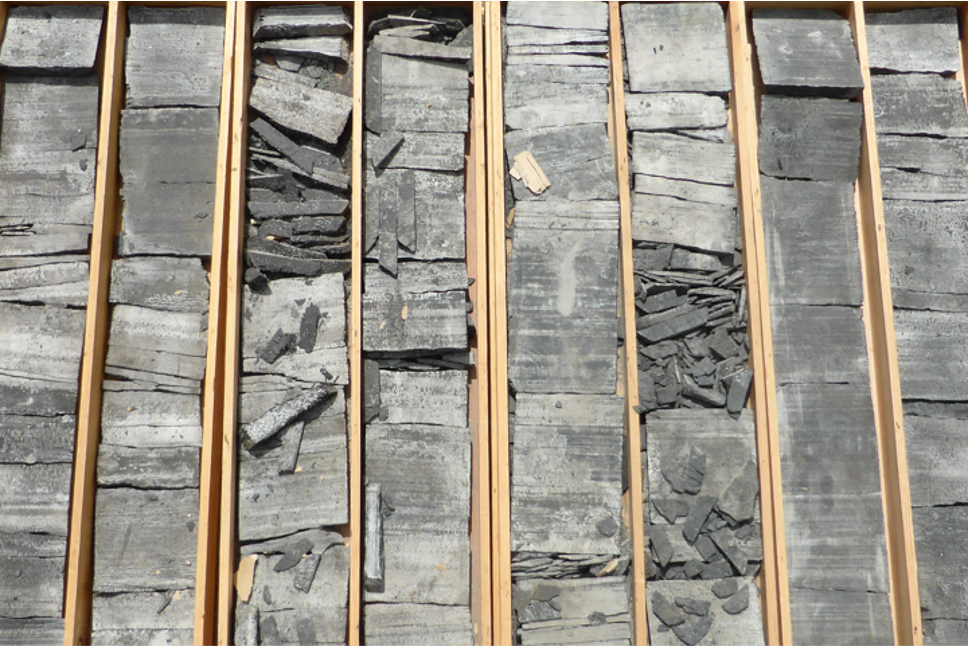When Per Arne Bjørkum – scientist at Equinor and emeritus professor at University of Stavanger – plotted total organic carbon contents (TOC) of 871 Upper Jurassic Draupne Formation source rock samples from 28 wells across the Norwegian sector against depth, he saw a trend he did not expect to find.
In fact, he did not see a trend at all.
Within a depth range of the expected oil window (when most oil is thought to be generated and expelled from the source rock), there is a wide scatter of data but no clear trend (see below).
The current model for the formation of oil and gas indicates that most of the oil is formed at temperatures above 100 ° C, and that the oil is then gradually broken down to gas at temperatures above 120° C. Geochemists also assume that oil is converted to dry gas at temperatures above 150 ° C, where methane makes up more than 90 percent of the gas.
This, in combination with a number of other observations, led Bjørkum to the following question: Does the classic oil window as we know it today correctly predict when most oil is being generated? After all, one would expect a trend of declining TOC values when moving through the oil window.
Could in fact the generation of oil take place at a much earlier stage in the burial process, i.e at depths from a couple of hundred metres to let’s say 1000 m? Bjørkum wrote an article about this that is currently available as a pre-print via eartharxiv.

Back to the early days
It is interesting in this regard that early explorers at the very start of the current period of oil consumption already hypothesised that oil generation took place at much shallower depths than what is assumed today. These people based their thinking on observations in a much shallower domain than what most people are currently used to. In that sense, Bjørkum is revisiting theories proposed in the 1940’s-1970’s before the discovery of deeper oil fields and the further study of oil generation abandoned the idea of early or shallow oil generation and favoured the model of the oil window as it is currently known.
However, there are quite a few “difficulties” related to the idea of deep oil generation, as Bjørkum argues in the paper.
One of the theories Bjørkum is casting doubt on is the idea that that most oils with an API less than 25° are the product of in-reservoir bacterial degradation of lighter oil. However, he writes that living microorganisms capable of doing this have never been documented, rendering the theory as speculative.
There is another reason – one of the many more cited in the paper – why Bjørkum started to doubt that heavy oil is solely the result of biodegradation. He argues that many heavy oils from present-day reservoir produce light oil when heated. This would not be possible when the heavy oil is solely the product of light oil degradation.
He therefore proposes to go full circle and revisit the theory of early oil expulsion the first generation of geologists formulated. This implies that an explanation must be sought for early oil migration into a reservoir, as well as maturation in situ.
CO2
According to Bjørkum, one of the main drivers for migration of heavy oil at shallow depths is carbon dioxide. This gas is a common by-product of early maturation and will still be in gaseous phase at shallow depth. Due to the pressure this exerts on the pore space, fractures are thought to develop along which the oil migrates into a reservoir.
Hydrogen
Once in the reservoir, much earlier than what current models predict, hydrogen is needed to prevent precipitation of bitumen. Bjørkum proposes that hydrogen is supplied to the “pooled oil” through the coalification of organic matter in mudstones and source rocks, thereby also implying that the composition of the original source material is not overly critical to the oil quality.
Implications
Although source rock maturation and conversion studies in the shallow overburden are virtually non-existent according to Bjørkum, his new model has yet to be confirmed through field work. Awaiting more results on the matter, there are potential implications for the exploration of oil – and gas as well, which is a matter of ongoing research.
In the pre-print version of the paper, Bjørkum states that oil could be found in basins and sub-basins where source rocks have not experienced temperatures higher than 120° C, thereby opening up areas previously considered non-prospective.
Should we therefore go back to basins such as the Norwegian-Danish Basin, the Hebrides Basin, the Unst Basin and the Stord? What is the implication on fields such as Liatårnet? There is surely a discussion to be had here.
HENK KOMBRINK
See also: Leter med utgangspunkt i gale teorier on Geo365




